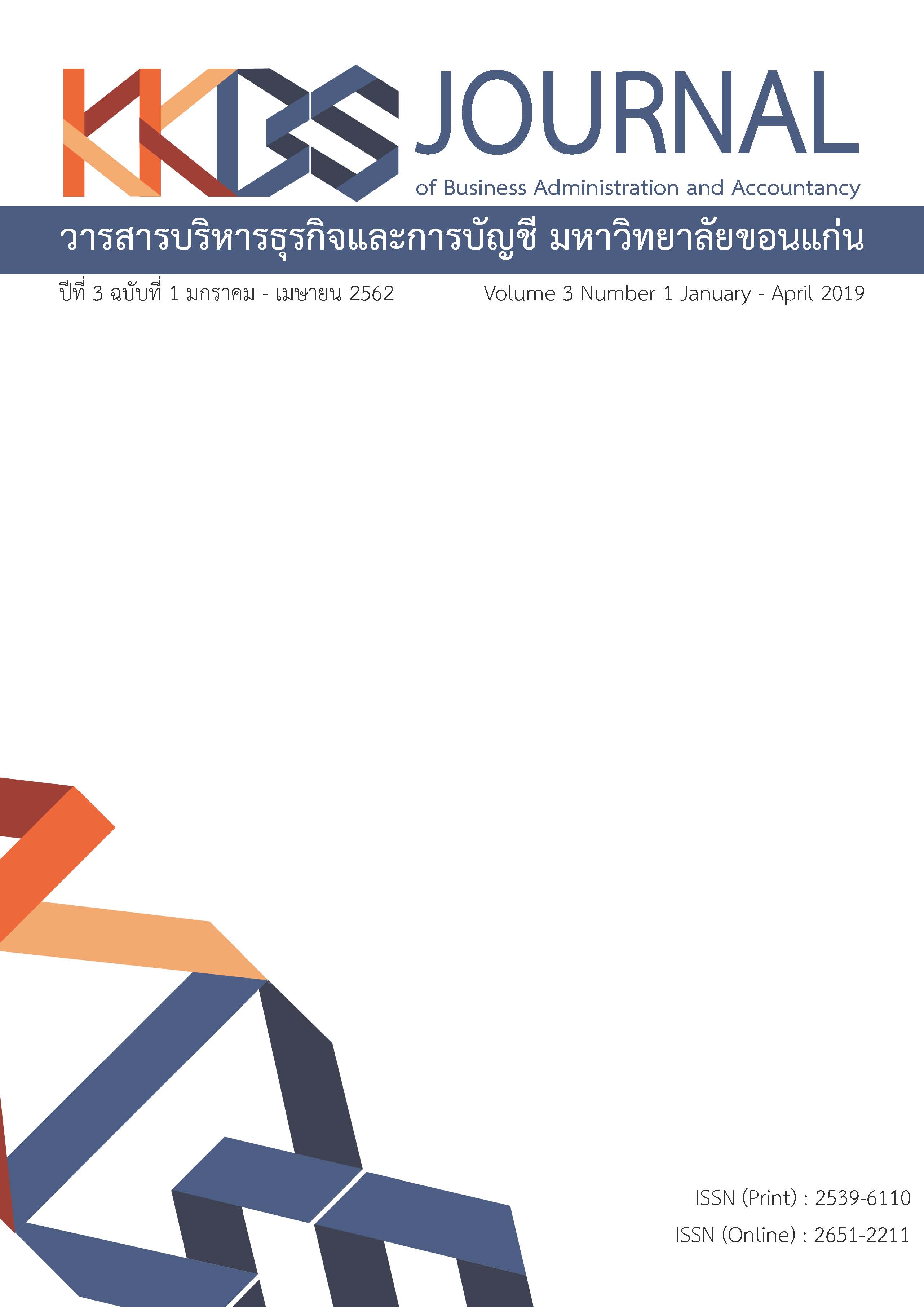Operation Approach of Happy Workplace Model in Eastern Part of Thailand
Main Article Content
Abstract
The objective of this research was to study the operation approach of happy workplace model in eastern part which consisted of the happy-8 model that influences the building of happy workplace, obstacles, problems, and solution. This is qualitative research and a case study. The sample group included the representatives of 5 happy workplaces. The result came from the interview of the informants who shared a similar idea relating to the operation approach of happy workplace model in eastern part. In consequence, the factors that affect the happy workplace include executive’s policy and demands of having happy employees which are the beginning of the happy activities due to happy-8 model that is composed of 1. Happy Body: to encourage exercising 2. Happy Heart: visiting employees 3. Happy Relax: arranging the annual traveling trip 4. Happy Brain: founding the training center and library. 5 Happy Soul: having morality and arranging moral activity project 6. Happy Money: knowing how to spend money and obtaining knowledge about finance 7. Happy Family: arranging the traveling trip for employees and their families. 8. Happy Society: providing social aiding services. For the activity, obstacles/problems are found, which are the employees lack the knowledge of the true happy workplace, the organization is unable to operate some activities, the employees have no desire to join some activities, the organization deprives of the leadership employees, arranging excessively frequent activities, and the executives see the effect towards the production process due to the reduction of working hours for operating the activities. For the solutions, the organization should study the other’s operation to apply knowledge, surveying the employees’ demands, explaining the operation approach and result to the managing team, and collaborating in making plans with the production department.
Article Details
The articles published in the journals are the authors' opinions, not the opinion of the editorial team or administrative staff. The articles published is copyright of the Journal of Business Administration and Accounting, Khon Kaen University.
References
ขวัญเมือง แก้วดำเกิง. (2556). ก้าวไปสู่องค์กรสุขภาวะ ก้าวไปเป็น Happy Workplace. พิมพ์ครั้งที่ 1. กรุงเทพฯ: ศูนย์สร้างเสริมสุขภาวะองค์กร สำนักงานกองทุนสนับสนุนการสร้างเสริมสุขภาพ.
จุฑามาศ แก้วพิจิตร และคนอื่นๆ. (2556). 123 สู่การเป็นองค์กรแห่งความสุข. พิมพ์ครั้งที่ 1. กรุงเทพฯ: ศูนย์สร้างเสริมสุขภาวะองค์กร สำนักงานกองทุนสนับสนุนการสร้างเสริมสุขภาพ.
ชาญวิทย์ วสันต์ธนารัตน์. (2553). Change… เพื่อสร้างความสุขในองค์กร. สืบค้นเมื่อวันที่ 10 ตุลาคม 2560, จาก http://www.wiseknow.com/blog/2009/05/22/2534/#axzz1XM0jYg4j
ชาญวิทย์ วสันต์ธนารัตน์, จุลัยวรรณ ด้วงโคตะ และนพพร ทิแก้วศรี. (2556). มาสร้างองค์กรแห่งความสุขกันเถอะ. พิมพ์ครั้งที่ 1. กรุงเทพฯ: ศูนย์สร้างเสริมสุขภาวะองค์กร สำนักงานกองทุนสนับสนุนการสร้างเสริมสุขภาพ.
แพง ชินพงศ์. (2558). เรามาสร้างความสุขให้ตัวเองอย่างง่าย ๆ กันเถอะ. สืบค้นเมื่อวันที่ 10 ตุลาคม 2560, จาก http://www.manager.co.th/QOL/ViewNews.aspx?NewsID=9580000003676
ยุพาวรรณ ทองตะนุนาม. (2558). ปัจจัยพัฒนาองค์กรแห่งความสุข (ภาครัฐ): การทบทวนวรรณกรรมอย่างเป็นระบบ. วารสารวิจัยทางวิทยาศาสตร์สุขภาพ, 9(1), 52-62.
ราชบัณฑิตยสถาน. (2546). พจนานุกรมฉบับราชบัณฑิตยสถาน พ.ศ. 2542. กรุงเทพฯ: นานมีบุ๊ค.
วรรณภา ลือกิตินันท์. (2557). แนวทางการสร้างองค์กรสุขภาวะในบริษัทข้ามชาติ: กรณีศึกษาบริษัทอุตสาหกรรมการผลิตในภาคตะวันออก. วารสารวิทยาการจัดการ, 31(1),1-15.
สภาอุตสาหกรรมจังหวัดชลบุรี. (2552). ประวัติความเป็นมา. สืบค้นเมื่อวันที่ 10 ตุลาคม 2560, จาก http://www.ftichonburi.org/index.php?mo=3&art=375587.
อธิวัฒน์ เจี่ยวิวรรธน์กุล และคนอื่นๆ. (2553). สูตรลัดการสร้างองค์กรแห่งความสุข: ด้วยกรณีศึกษา 6 จังหวัดภาคี. กรุงเทพฯ: ศูนย์สร้างเสริมสุขภาวะองค์กร สำนักงานกองทุนสนับสนุนการสร้างเสริม สุขภาพ (สสส.).
Burton, J. (2010). WHO Healthy workplace framework and model: Background and supporting literature and practice. Retrieved October 10, 2017, from http://www.who.int/occupational_health/healthy_workplace_framework.pdf
Dive, B. (2004). The healthy organization: revolutionary approach to people & management. 2nd Ed. London: Kogan Page.
Lowe, G.S. (2004). Health workplace strategies: creating change and achieving results. Toronto: The Gramhaw Group.


